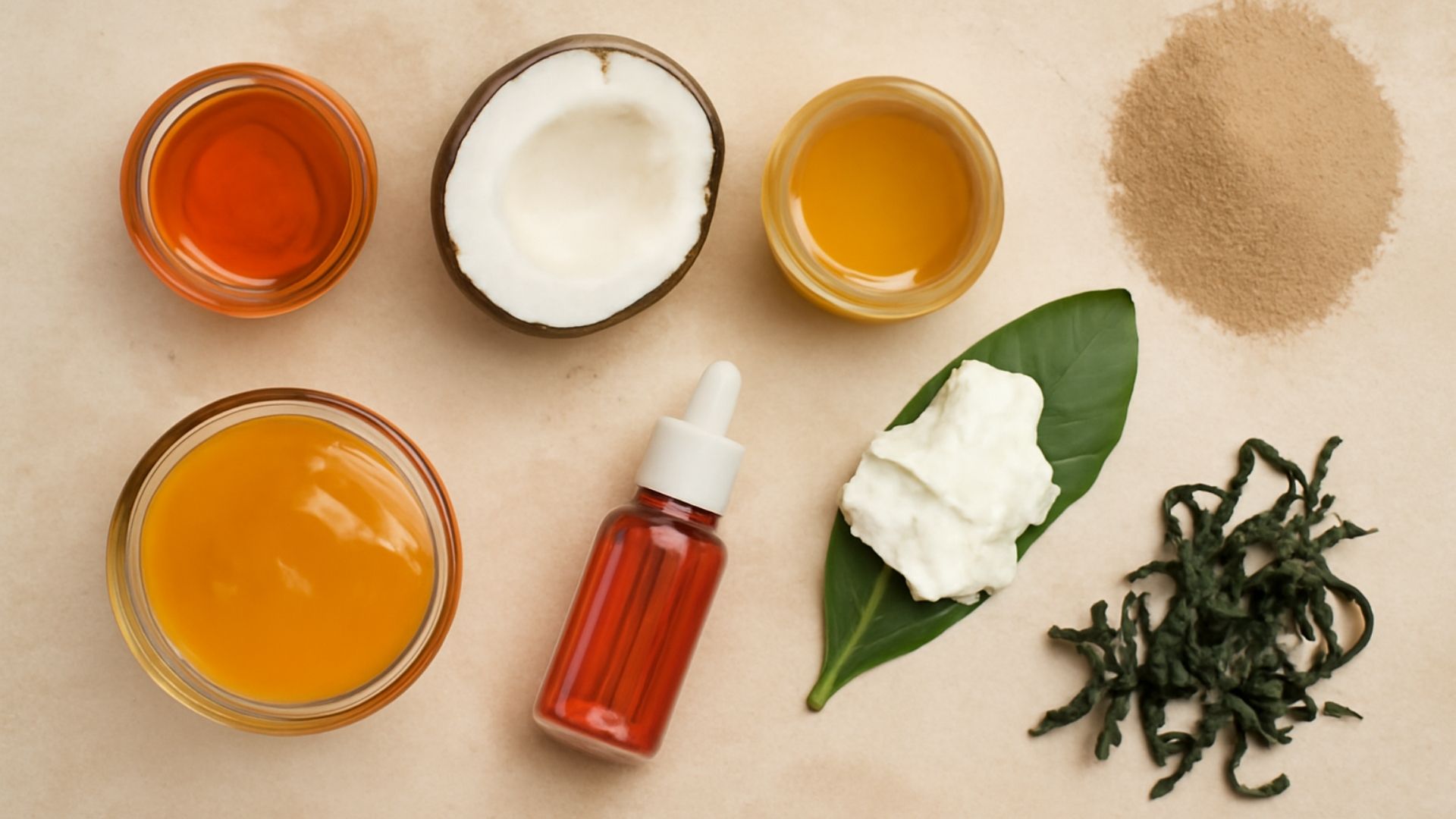Common Natural Beauty Ingredients Harming Planet
Natural Beauty Ingredients Harming Planet- As the natural beauty industry continues to thrive, more consumers are opting for products that boast “natural” or “organic” ingredients, believing they are safer for the skin and kinder to the planet. However, while these ingredients seem to promise sustainability, many are contributing to severe environmental degradation.
In this blog post, we’ll uncover the environmental impacts of some common “natural” beauty ingredients, explore the rising problem of “greenwashing,” and offer eco-friendly alternatives to help reduce the environmental cost of our beauty routines.
The Growing Popularity of Natural Beauty Products
The demand for natural beauty products has skyrocketed in recent years, with the global market projected to reach a revenue of approximately £11.3bn ($14.9bn) in 2025. The increasing consumer preference for products with botanical ingredients, minimal processing, and fewer synthetic pesticides has driven this growth. In the UK alone, the natural cosmetics sector is set to hit £210m ($278m) by 2025.
But this booming market has its challenges. As more products flood the market, the environmental burden increases due to the growing demand for raw materials, more packaging waste, and the emissions associated with each step of the supply chain.
Common Natural Beauty Ingredients Harming the Planet
Despite the appeal of “natural” products, many of the ingredients commonly used in beauty products are linked to significant environmental harm.
1. Palm Oil: The Hidden Culprit in Your Beauty Products
Why It’s Used: Palm oil is a versatile and cost-effective ingredient commonly found in soaps, shampoos, and moisturizers. It enhances texture and extends shelf life.
Environmental Impact: The production of palm oil leads to deforestation in Southeast Asia, resulting in the loss of vital habitats for endangered species such as orangutans and tigers. The clearing of forests for palm oil plantations also contributes significantly to carbon emissions, exacerbating climate change.
Sustainable Alternatives: Look for products that use certified sustainable palm oil (RSPO certification) or choose alternatives like coconut oil, sunflower oil, or shea butter, which have a lesser environmental footprint.
2. Coconut Oil: The Double-Edged Sword
Why It’s Used: Coconut oil is a popular moisturizer, used in hair care, skin care, and lip balms.
Environmental Impact: The demand for coconut oil has led to monoculture farming, depleting soil nutrients and contributing to land degradation. Additionally, the carbon footprint of transporting coconut oil over long distances adds to its environmental cost.
Sustainable Alternatives: Seek organic, fair-trade coconut oil or consider more sustainable oils like olive oil or jojoba oil.
3. Honey: Sweet for Your Skin, Sour for the Bees
Why It’s Used: Honey is used in beauty products for its antibacterial properties and soothing effects.
Environmental Impact: The growing demand for honey has led to over-exploitation of bee colonies, which are essential for pollination and the balance of ecosystems. Unsustainable honey harvesting practices can harm bee populations, contributing to their decline.
Sustainable Alternatives: Opt for plant-based alternatives such as glycerin, aloe vera, or propolis, which don’t harm bees.
4. Shea Butter: The Sustainability Issue
Why It’s Used: Shea butter is valued for its rich texture and skin-nourishing properties.
Environmental Impact: The demand for shea butter has led to over-harvesting, contributing to deforestation and soil degradation in Africa, threatening local biodiversity.
Sustainable Alternatives: Choose fair-trade and sustainably sourced shea butter or switch to alternatives like cocoa butter or mango butter, which may have a lower environmental impact.
5. Rosehip Oil: Beauty at the Cost of Biodiversity
Why It’s Used: Rosehip oil is prized for its regenerative properties, especially for reducing scars.
Environmental Impact: The demand for rosehip oil has led to unsustainable harvesting practices and monoculture farming, contributing to biodiversity loss and land degradation.
Sustainable Alternatives: Opt for organic, wild-harvested rosehip oil or choose other oils like argan oil or marula oil, which are more sustainably sourced.
6. Algae: A Superfood or an Environmental Threat?
Why It’s Used: Algae, such as spirulina and chlorella, are found in beauty products for their antioxidant properties.
Environmental Impact: Algae farming can deplete water resources and release harmful chemicals into the environment. Over-exploitation of wild algae also damages marine life.
Sustainable Alternatives: Look for responsibly farmed algae or choose plant-based antioxidants like green tea or matcha.
7. Sand: A Surprising Environmental Villain in Scrubs
Why It’s Used: Sand is commonly used in exfoliating scrubs for its abrasive properties.
Environmental Impact: The extraction of sand for cosmetic use contributes to habitat destruction, erosion, and disruption of local ecosystems, particularly in coastal areas. Sand-based scrubs can also contain microplastics, which pollute the oceans.
Sustainable Alternatives: Choose scrubs with natural exfoliants like sugar, sea salt, or coffee grounds, which are gentler on the environment.
Must Read: Some Birds Can Sleep While Flying
The Role of Lab-Grown Ingredients: A Sustainable Future?
A potential solution to the environmental challenges posed by natural beauty ingredients is the use of biotechnology. Through fermentation or lab-grown methods, companies can produce ingredients like bisabolol (for anti-redness) or squalane (a moisturizing agent) in a much more sustainable way.
For example, lab-grown lavender oil requires significantly less water and energy than its natural counterpart. Companies like Biossance are already using squalane derived from sugarcane, a more sustainable alternative to squalene, which is traditionally harvested from shark fins.
Biotech ingredients also offer greater purity, consistency, and effectiveness than natural ones, meaning products last longer and work better, with a much smaller environmental footprint.
The Rise of Greenwashing: Be Mindful of Marketing Labels
While many beauty brands market their products as “natural” or “eco-friendly”, consumers should be cautious of greenwashing. Greenwashing occurs when companies falsely advertise their sustainability efforts to attract conscious buyers.
- What to Look For: Look for terms like “fermentation-derived”, “bio-identical”, or “bio-designed” ingredients, which indicate that the product is made using sustainable and lab-grown methods.
- Avoid Misleading Claims: Be wary of buzzwords like “chemical-free”, “biodegradable”, or “sustainable” without clear, verifiable explanations behind them.
What You Can Do: Make Sustainable Beauty Choices
- Read Labels: Choose products with credible certifications like fair trade or organic to ensure that ingredients are sourced sustainably.
- Opt for Eco-Friendly Packaging: Choose products that use recycled or biodegradable packaging to reduce plastic waste.
- Support Ethical Brands: Look for brands that are transparent about their sourcing practices and environmental impact.
- DIY Beauty: Making your own beauty products using natural ingredients can be a fun and eco-friendly way to minimize your environmental impact.
Conclusion: The True Cost of ‘Natural’ Beauty
The growing demand for natural beauty products has led to unintended environmental consequences. Ingredients like palm oil, coconut oil, honey, and shea butter often come at a significant environmental cost, from deforestation to water depletion and loss of biodiversity.
While “natural” beauty may seem like the eco-friendly choice, it’s important to recognize that not all natural ingredients are equally sustainable. By choosing biotech ingredients, eco-friendly packaging, and being mindful of greenwashing, we can help make more informed decisions and reduce the environmental impact of the beauty industry.
The future of beauty lies in products that are not only good for your skin but also good for the planet. Let’s embrace smarter, more sustainable solutions and support brands that prioritize the health of the environment as much as they care for our beauty needs.








2 Comments